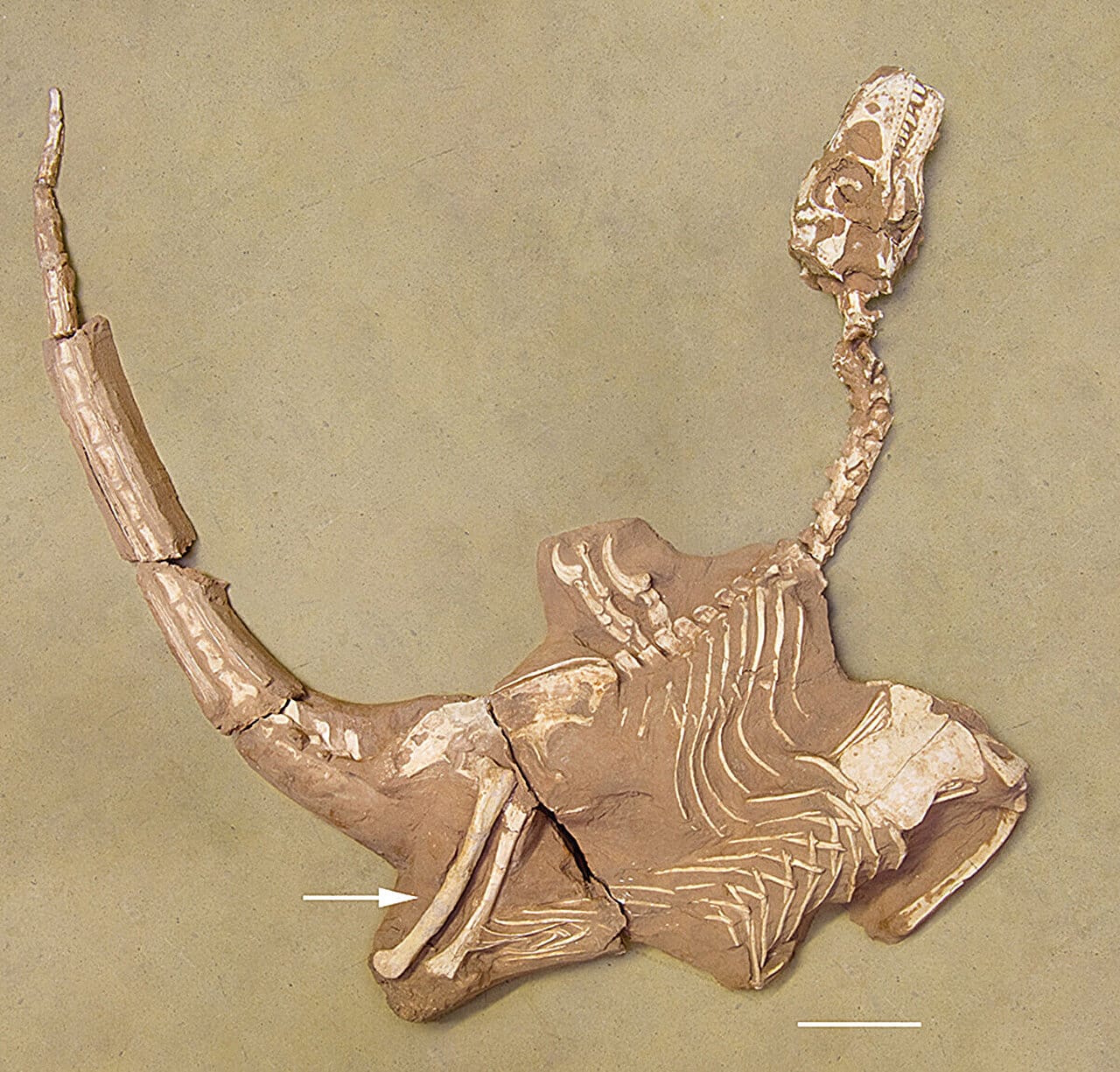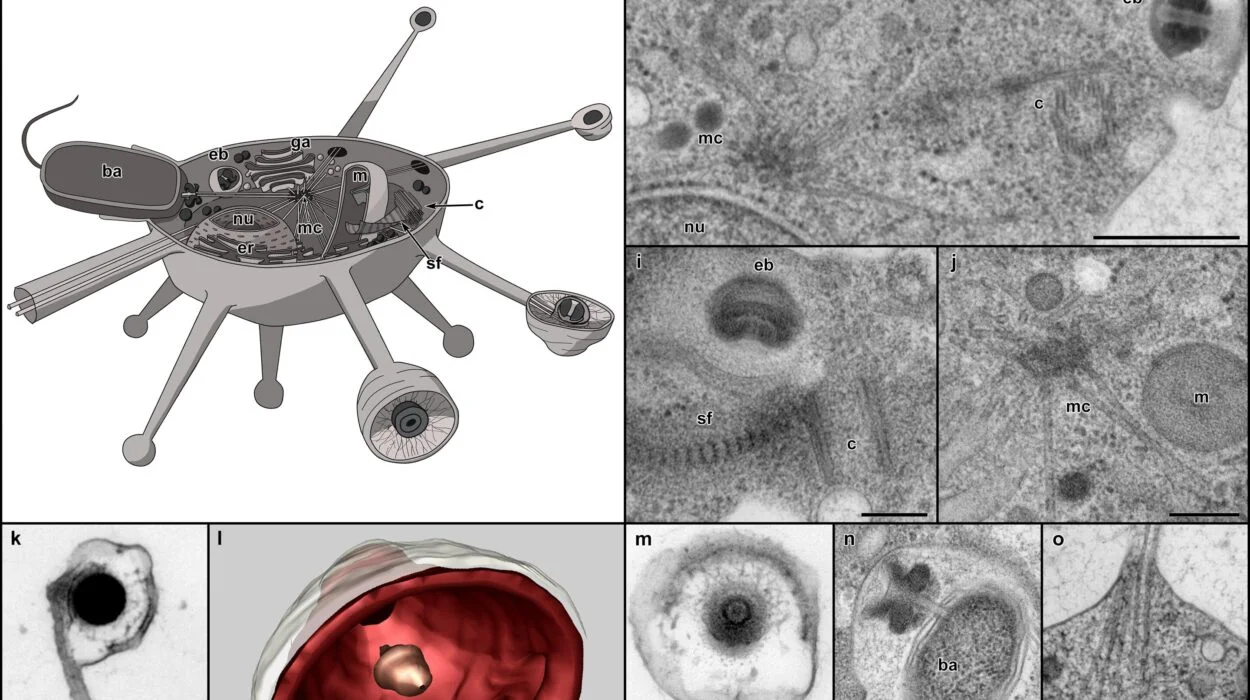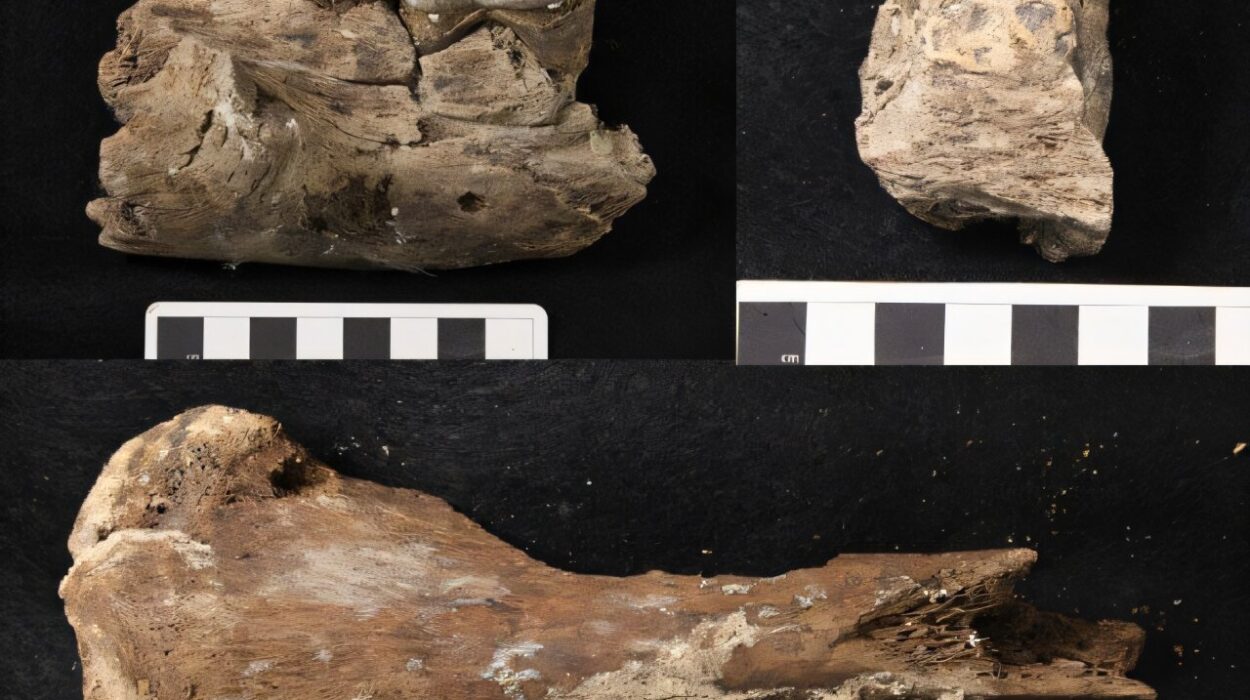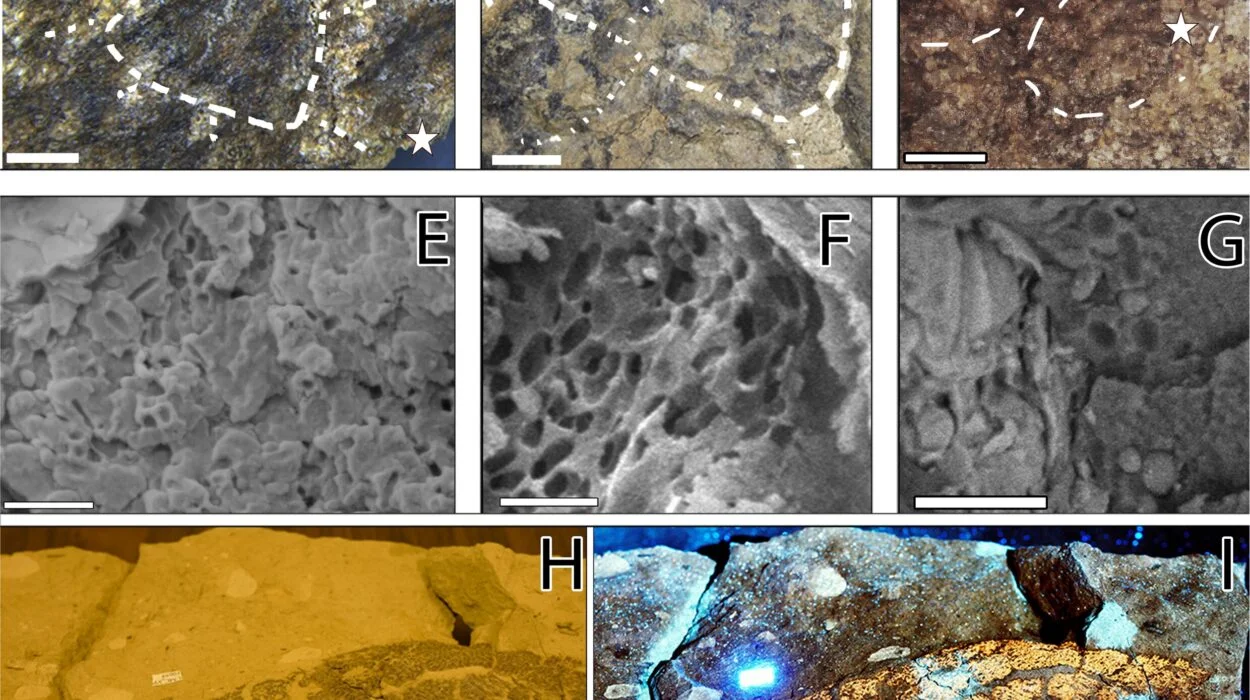In the arid remnants of Mongolia’s Late Cretaceous deserts, a new species of dinosaur is rewriting what we know about dromaeosaurid evolution. Paleontologists from an international team led by the University of Poitiers in France have described a remarkable fossil: a close relative of Velociraptor with unusually large, powerful hands. The newly named species, Shri rapax, stands out for its robust forelimbs—traits that hint at an entirely different predatory strategy within its ecological niche.
Published in Historical Biology, the study introduces Shri rapax as a key to understanding how predators like Velociraptor and its relatives shared the same ancient deserts without outcompeting each other. The answer may lie, quite literally, in the grasp of their hands.
Velociraptor Relatives Usually Grabbed Attention with Their Feet—Not This Time
Most research on dromaeosaurids—small to medium-sized, feathered, carnivorous dinosaurs often nicknamed “raptors”—has centered on their feet. These predators are famous for the oversized sickle-shaped claw on each foot, a weapon immortalized in pop culture and museum halls. But when it comes to their hands, the evolutionary story has remained relatively quiet—until now.
The classic Velociraptor mongoliensis had long, slender fingers, probably used for grabbing or holding smaller prey. But in Shri rapax, scientists observed hands that break this pattern entirely. Its thumb claw, or pollex ungual, is not just large—it’s massive. At 162% the length of the preceding thumb bone, it suggests this dinosaur had an unusually strong grip, with digit I alone broader than the remaining two digits combined.
This unexpected anatomy prompted researchers to ask a new question: What role did hand strength play in how dromaeosaurs hunted? Could Shri rapax have specialized in a completely different way of catching prey?
From the Shadows of Smuggling to Scientific Spotlight
The path that Shri rapax took from ancient sand dunes to scientific stardom was far from smooth. Like many fossils from the Gobi region, it passed through the murky underworld of black-market fossil trade. The specimen was likely poached before 2010, eventually making its way to private collections in Japan and then the UK.
In 2016, Belgian scientists at the Royal Belgian Institute of Natural Sciences (RBINS) had temporary access to a portion of the skull and neck vertebrae, which they scanned in detail before returning the material to its private owner. That part of the fossil is now missing, its current location unknown.
Fortunately, the rest of the specimen—including 23 tail vertebrae, a nearly complete hand, shoulder and hip bones—was acquired by French fossil company Eldonia and later repatriated to Mongolia. It now resides at the Institute of Paleontology and Geology in Ulaanbaatar under the specimen number MPC-D 102/117.
Despite the gaps in provenance, researchers were able to piece together a near-complete picture of this lost predator.
A Dinosaur With Hands Built for Power
Using computed tomography (CT) and photogrammetry, researchers analyzed the fine details of the fossil’s preserved anatomy. These high-resolution digital models revealed complex features rarely seen in similar dinosaurs: cranial sutures in the skull that helped understand its bite mechanics, and double pleurocoels—air-filled cavities that lighten bones—within the dorsal vertebrae near the shoulder.
Even more striking were the trapezoid-shaped deltopectoral crests on the humerus, indicating that this dinosaur’s chest and upper arms supported heavy muscle attachments. These ridges, combined with the enormous thumb claw, suggest a hand built not for speed or delicacy, but brute strength.
This raises the possibility that Shri rapax could subdue larger or more heavily armored prey than its lighter-limbed relatives. Unlike Velociraptor, which likely hunted small, fast-moving animals, Shri rapax might have taken on young armored dinosaurs like ankylosaurs, or even small adult horned dinosaurs such as Protoceratops.
Digging into the Past: Morphology as a Window to Behavior
The study’s lead author, Dr. Vincent Lefèvre, and his colleagues compared Shri rapax to its close relatives using detailed measurements (morphometrics) and phylogenetic analysis. Their results placed the species as a sister taxon to Shri devi, another dromaeosaurid from the younger Baruungoyot Formation of Mongolia.
Despite being closely related, Shri rapax and Shri devi show key differences in their body plans. These include divergence in at least ten postcranial traits (those found in the body, excluding the head), such as a sharply backward-angled pubic bone, a shortened ischium (part of the hip), and the absence of an ischial tuberosity—a knob of bone usually associated with muscle attachment.
All of these skeletal details suggest that Shri rapax evolved for different physical demands. Stronger bite forces, broader hands, and a sturdier frame imply that it tackled tougher meals, carving out a distinct dietary role even as it shared its desert home with other raptors.
Desert Dwellers and the Puzzle of Predator Diversity
The Djadokhta Formation, where Shri rapax likely originated, is a Late Cretaceous fossil treasure trove. It captures a snapshot of a 75-million-year-old ecosystem—a sweeping desert where agile predators, armored herbivores, and early birds coexisted in an ever-shifting food web.
But what has long puzzled paleontologists is just how many similar predatory dinosaurs cohabited this arid environment. Several dromaeosaurids—including Velociraptor, Shri devi, Adasaurus, and now Shri rapax—have been discovered in overlapping regions and timeframes. How could so many raptor-like carnivores thrive without starving each other out?
The answer, according to this new study, lies in niche partitioning—a principle in ecology where closely related species avoid competition by adapting to different roles. For these predators, that meant hunting different prey.
While Velociraptor may have relied on agility and foot claws to pin small animals, Shri rapax developed powerful forelimbs and jaws to dominate bulkier prey. This ecological divergence reduced direct competition, allowing multiple species to flourish side by side in the same harsh landscape.
Science Reclaims a Lost Fossil to Rewrite the Narrative
The story of Shri rapax is not just a tale of paleontological discovery. It’s also a triumph of science over fossil trafficking. Despite its illicit journey through private hands, much of the specimen was eventually brought home, where researchers could study and preserve it for future generations.
Even though its original excavation site remains unknown, the composition of its surrounding rock (the sediment matrix) links it to the famed Djadokhta Formation. This connection reinforces the importance of both field-based and laboratory-based analysis in paleontology. Fossils do not have to be complete—or even fully provenanced—to yield extraordinary insights when studied responsibly.
The research team also created digital casts of the missing skull elements using earlier CT scans. These 3D-printed models now accompany the mounted skeleton in Mongolia, allowing scientists to continue investigating the fossil even in the absence of its original cranial bones.
A Glimpse into Prehistoric Lives—and Future Discoveries
Shri rapax is a reminder that the fossil record is still full of surprises. Even within one of the most famous dinosaur groups, new species continue to reshape our understanding of prehistoric life. In this case, it’s not just about claws or bones, but about how evolution crafts predators to fit into crowded ecosystems—each with a specialized toolkit forged by time.
By focusing on overlooked features like hand morphology, researchers have peeled back another layer of the Mesozoic world. They’ve shown that raptors weren’t all built the same, and that power could be just as valuable a hunting strategy as speed.
As more fossils are uncovered—and more illegally trafficked specimens returned—scientists hope to build a clearer picture of how ancient ecosystems worked, how species interacted, and how dinosaurs like Shri rapax carved out their place in a deadly desert of tooth and claw.
More information: Léa Moutrille et al, A new bird-like dinosaur from the Upper Cretaceous of Mongolia with extremely robust hands supports niche partitioning among velociraptorines, Historical Biology (2025). DOI: 10.1080/08912963.2025.2530148





